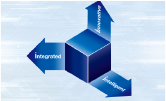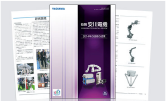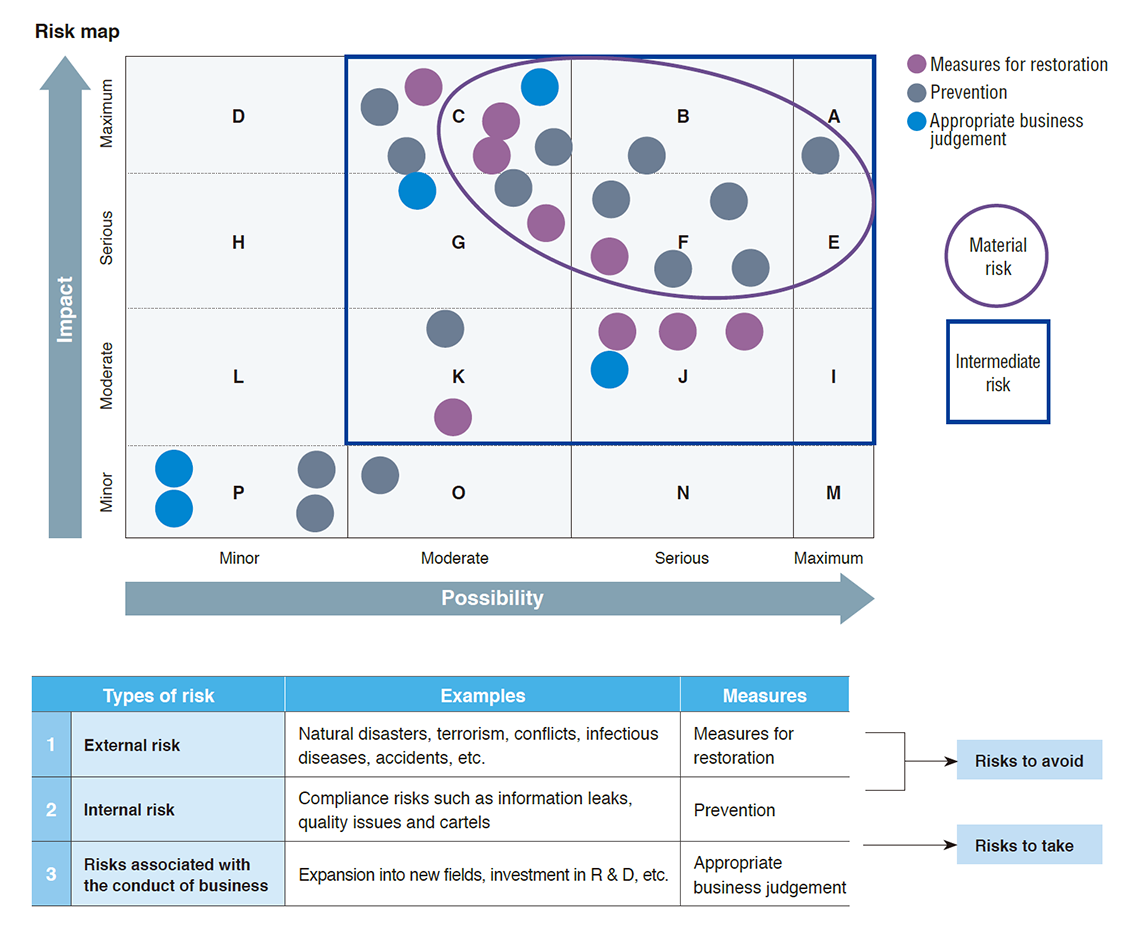Risk management
Basic policy
The Yaskawa Group has established the following basic policies for risk management in its “Basic Rules for Crisis Management”.
- Establish a crisis management system in Yaskawa Group to raise awareness and prevent crisis.
- Clarify the procedures to be followed in the event of a crisis, and minimize the impact on management and business operations by responding promptly and appropriately in the event of a crisis.
Promotion system
Yaskawa monitors risks related to the status of management, including economic and market conditions, at executive meetings such as the Executive Committee and the Board of Directors. In addition, we have established the Basic Rules for Crisis Management for the purpose of promptly and accurately addressing risks that may directly or indirectly interfere with the management or business operations of the Group. In accordance with these rules, we have established the Crisis Management Committee, which is managed by the Chairperson of the Crisis Management Committee appointed by the President, and its subcommittees.
Risk management initiatives
On a semi-annual basis, the Risk Management Committee, whose members include top management, including the chairs of various technical committees, meets to plan and promote risk management education, evaluate risks, and take appropriate measures, such as setting up a countermeasure headquarters according to the level of risk in the event of an occurrence. In addition, the status of risk management is regularly reported to the Executive Committee, the Board of Directors, and the Sustainability Committee to supervise and monitor the risk management of the entire company and to strengthen risk management.
Definition and classification of risks
The Yaskawa Group classifies risks into three categories: (1) risks such as natural disasters that are beyond human control, (2) risks that have internal causes, such as compliance issues, and (3) risks that should be taken as management decisions, such as investments in new businesses. The Yaskawa Group then identifies risk items, classifies them in terms of their impact and possibility, and implements appropriate measures for each item.
 Region
Region



 Principles & vision
Principles & vision
 Procurement
Procurement
 Sustainability for the Yaskawa Group
Sustainability for the Yaskawa Group
 Customer satisfaction
Customer satisfaction
 Supply chain
Supply chain
 Social contribution
Social contribution
 Compliance & risk management
Compliance & risk management


































